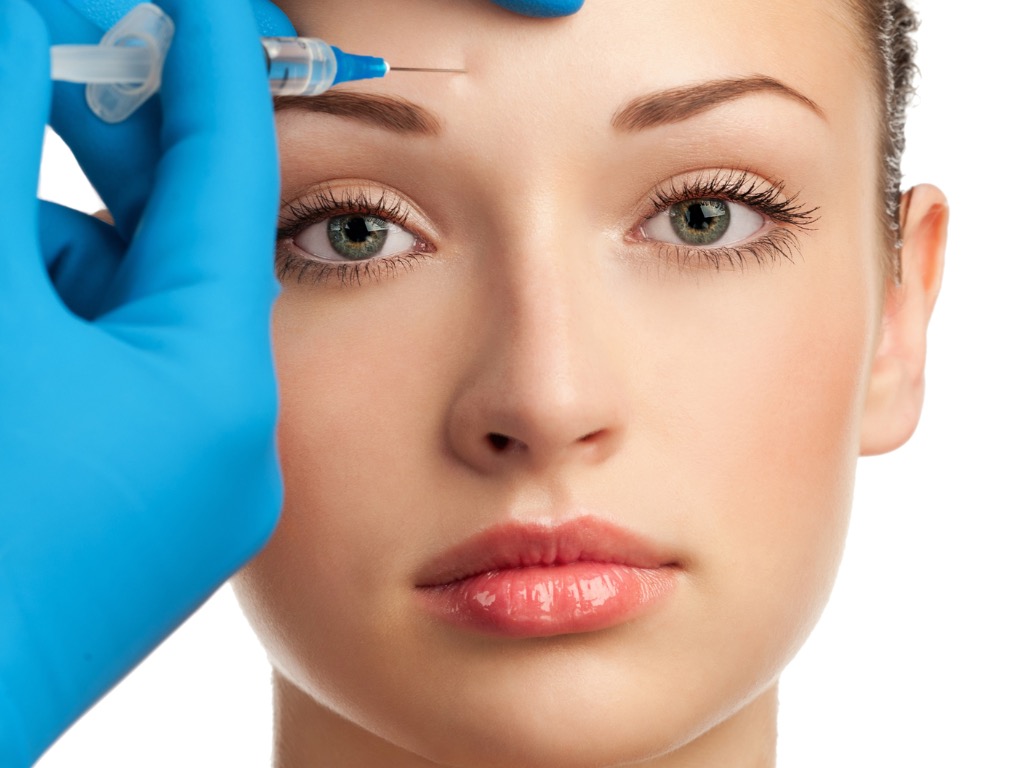Published on December 1, 2017 by Kenneth D. Steinsapir, M.D.
Ever wonder what your doctor/nurse/whomever is using on your skin to clean it before a cosmetic service like Botox or fillers? If you answered no, you would be in the same boat as most everyone else. However, you should make it your business to know. That is because one of the most common skin cleaners used before cosmetic facial treatments literally has the potential to blind you. Yes, one of the most common skin cleaners should not be used on the face because of the risk of causing permanent damage to the eye. That product is called chlorhexidine. The most common form of chlorhexidine used for cleaning the skin goes by the name Hibiclens.

Hibiclens is one of the best skin cleaners we have and commonly used to sterilize the skin at the time of surgery. However, it is toxic to the middle ear, causing deafness, and toxic to the cornea, with the potential to cause permanent blindness. After the initial discovery of this toxicity in 1987, the manufacturer of Hibiclens notified the medical community and disavowed the use of this product on the head and scalp including the face. In the late 1980’s, ophthalmologists reported 11 sentinel cases of visual loss that occurred after exposure to Hibiclens at the time of surgery. Several of these individuals suffered permanent visual loss or required a corneal transplant. As a result of these findings together with evidence that it could damage the middle ear, operating rooms banned the use of chlorhexidine as a surgical prep on the head and scalp before surgery.
I recently discovered that this message did not penetrate the dermatology community and the wider office based aesthetics and med spa practices that take their lead from dermatologists. This might be due to the fact these are non-surgeons who understandably spend very little time in operating rooms. They have continued to use this product on the face even for very clean procedures like a Botox or filler injection. To be fair, if you are wide awake and get a splash of chlorhexidine in your eye, you are very unlikely to have permanent damage from this. That is because the product is so irritating that you will instantly have severe eye pain and tearing from this. These reflexes are lost with the deep anesthesia or sedation used for actual surgery. Even the tiniest splash of chlorhexidine prep on to the eye surface will cause severe irritation that can necessitate a trip to your eye doctor and a week of recovery.
I published a perspective on this subject with Julie Woodward in the January 2017 Dermatologic Surgery, a leading dermatology professional journal. Many dermatologists have contacted me to thank me for the information and have discontinued the use of chlorhexidine as a facial prep. However, many persist in ignoring the safety of their patients and continue to use this dangerous product. They tell me that they have used the product for years and have never had a problem. So I am warning you to ask what the doctor is using to clean the face. Let them know that you do not want chlorhexidine on the face. There are other safe alternatives including an alcohol wipe, betadine or chloroxylenol. Let your injector know that you are not comfortable with the use of chlorhexidine on your face.
Reference: Steinsapir KD, Woodward JA. Chlorhexidine keratitis: Safety of chlorhexidine as a facial antiseptic. Dermatologic Surgery. January 2017; 43(1):1-6.
About Dr. Steinsapir
Dr. Steinsapir is an oculofacial and cosmetic surgeon in Beverly Hills. He is board certified in ophthalmology and fellowship trained in his areas of practice. He specializes in balanced facial cosmetic surgery for natural results, with an emphasis on minimally invasive techniques, fast recovery time, and leadership in medical technology. He is internationally known for fixing unsatisfactory prior eyelid surgery. He has authored over 50 scientific papers and 8 book chapters and holds a United States patent for the Microdroplet Lift®. He also serves as an Associate Clinical Professor of Ophthalmology at the Jules Stein Eye Institute, at the David Geffen School of Medicine at UCLA. Contact us today to learn how Dr. Steinsapir can help you achieve your goals.

